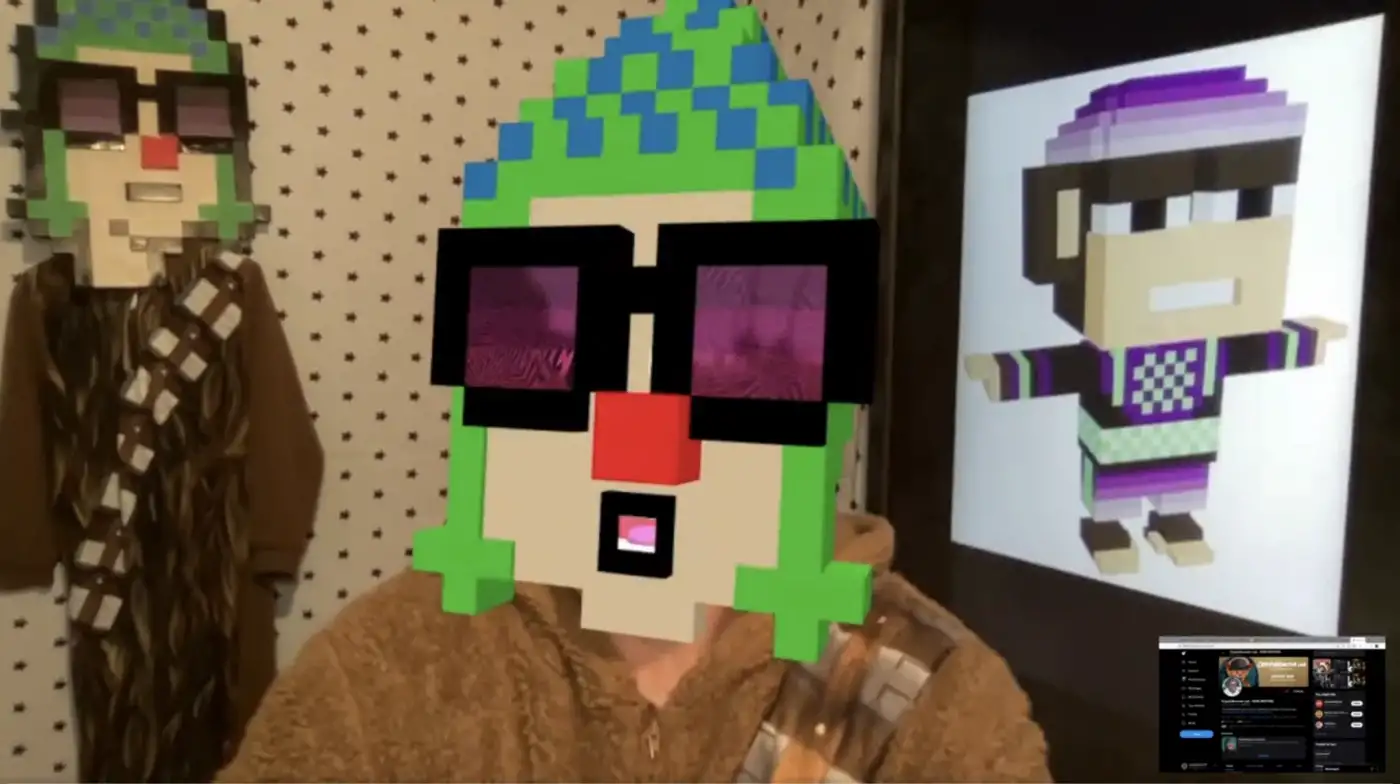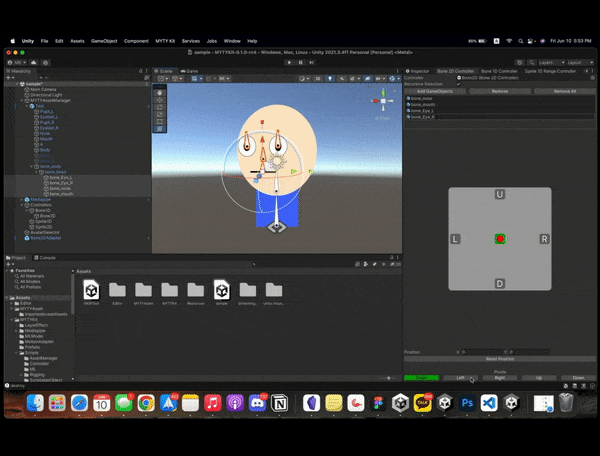Decentralized Society and the Social Metaverse
In our previous post, we shared MYTY’s vision of creating an on/off-chain infrastructure for the “web3 social metaverse.” The concept of a web3 social metaverse may still be foreign to most because there aren’t many examples of it out there. But we believe the field will eventually become mainstream, along with web3’s progression. “Radical Markets” co-author E. Glen Weyl and Ethereum co-founder Vitalik Buterin recently shone a spotlight on the social context of blockchains and web3 in their 37-page paper titled “Decentralized Society: Finding Web3’s Soul.” Here, they used the titular term “decentralized society” to mean the same thing as a “web3 social metaverse.” The current financial-asset-centric web3 will evolve into one centered on social relationships built on trust, and this will be the web3 social metaverse.
Why Avatars Are Important in the Social Metaverse
MYTY believes the avatar is a crucial element in ushering in the web3 social metaverse. This is why MYTY decided to first focus on developing the Avatar Standard and its associated SDK.
Avatars as a means of self-expression
The primary purpose of using an avatar is to express yourself the way you want. In the physical world, our bodies and our external appearances are precious and inseparable from our lives. But as a “means of self-expression,” they have limitations in that the most important attributes have already been decided for us, whether we like it or not. We add a layer of autonomy and expression through our choice of clothes and accessories. For more fundamental changes, we turn to exercise and plastic surgery. But even with all this, there’s still a limit to how much you can change what you are born with.
Digital avatars, on the other hand, enable maximum self-expression. The only limit is your imagination. In the metaverse, you can choose your ethnicity, skin color, gender, etc. You can even define yourself as an animal, a plant, an alien or a rock if that’s what you want.
Avatars as a means of awakening the subliminal self
An avatar goes beyond being a means of self-expression. It can go further, functioning as a means of self-identification. As we alluded to in our previous post, multi-persona is a key characteristic of the social metaverse. But coming up with a multi-persona is not easy for everyone. Digital avatars can help. Through digital avatars, anyone can tap into their “hidden selves.” I’m sure we’ve all had the experience of putting on something we usually don’t wear, trying on a new hairstyle, and feeling like a different person. This is because our external appearances influence how we perceive and identify ourselves. In other words, we wake up in the morning, look in the mirror, and use whatever the mirror throws back at us as a guide to who we are and how we should act. Using digital avatars that we are somehow drawn to, we can awaken a version of ourselves that had been lying dormant within us.
Avatar as a means of production
We previously discussed the importance of earning economic rewards through social activities. General social activities that anyone can partake in, as opposed to a particular game genre, will become the backbone of interactions in the future metaverse. Economic rewards will take activities in the metaverse from being “just another hobby” to “another life.”
Then, what will be the most prominent means of production in these socioeconomic activities?
Let’s zoom out. In the Industrial Age, land and machinery were the most prominent means of value production. Today, the equivalent is a company’s logo. Two items of the same quality have different values, depending on what logo is on them. For creators participating in the social metaverse economy, their avatars will have the same standing as a corporate logo. The avatar will represent someone’s personal brand, and the person’s reputation and achievements will, in turn, be built around the avatar.
Because of these multi-layered values, avatars will become a significant means of production. Japan’s “Virtual YouTuber” phenomenon is a key example of using digital avatars for socioeconomic activities. We already see some people making more money through avatars and multi-personas in NFT communities than through economic activities in the physical world. For them, the loss of their avatars will mean the loss of an important livelihood.

What Is MYTY Trying to Do With Avatars?
Creating a social metaverse where various PFP avatars play together requires an avatar standard. Right now, there are several projects aimed at providing an avatar-related infrastructure for the web3 ecosystem. Our MYTY Avatar Standard and MYTY Kit (Avatar SDK) stand out from the rest for the following reasons.
-
It’s the very first to start from the PFP culture, which can be defined as web3 consumer behavior with an economic impact.
-
It preserves the 2D nature of the PFP ecosystem’s most influential projects, and will later expand to cover 3D formats.
-
It’s “maximally open-source” and, therefore, stays true to web3’s values of being open, censorship-resistant, and permanent.
The very first Web3-native avatar standard
Most web3 avatar projects out there actually started in web2, saw business opportunities on web3, and only then pivoted to or added web3 business items. MYTY is the very first project explicitly launched for web3. We saw the potential of a PFP-centric web3 social metaverse and, from May 2021, began creating solutions exclusively for web3.
Technology that allows NFT holders to express their beloved 2D PFPs, as is.
Likewise, many projects are focused on taking their 3D technology, which they have honed and polished on web2, and offering it as-is for web3. This is a rather supplier-driven business approach. By contrast, MYTY, from its outset, was all about meeting the actual needs of the most influential PFP projects and their holders.
When MYTY started in May 2021, most PFPs were 2D. Not much has changed since. Today (May 2022), of the top 100 Ethereum projects by initial trading volume, 67 are PFPs. 75% or 50 of these 67 PFP projects are 2D, while only 17 are 3D. In other words, the majority of the most popular avatars in the market have always been, and still are, 2D. While most avatar infrastructure projects only offer 3D technology, MYTY is working on perfecting its 2D technology to preserve the PFP’s 2D form that users initially fell in love with. At the same time, we recognize that consumer preferences can always change in the fast-developing NFT ecosystem. That is why MYTY is looking to incorporate 3D into its Avatar Standard so that it can support both 2D and 3D PFPs in the future.
Open-source, to uphold Web3 values
Most projects that provide avatar technology use business licenses. While basic functions are provided free of charge, commercial use, including NFT minting, usually requires written consent from the infrastructure provider. The project owner may even reserve the right to withdraw licenses at any time. We do not believe this approach suits the web3 ecosystem, where MIT-level open-source licenses prevail. From a practical viewpoint as well, business licenses will be a pain in the neck for a trustless, censorship-resistant, decentralized platform. This is why MYTY aims to grant the highest level of open source licenses. Anyone will be able to participate in, develop, fork, and use the MYTY Avatar Standard and SDK, giving them a powerful presence in the web3 ecosystem.
Bring Your PFPs to Life With MYTY
We will soon unveil the MYTY Avatar Standard and MYTY Kit for Unity. PFP avatarization will involve the following:
What you need to bring:
-
PFP Images decomposed into layers, by movable units (PSD, PSB).
-
Metadata about token ID-specific traits, as recorded on NFT smart contracts.
The working process:
-
Attach “bones” to the PFP image.
-
Define PFP’s animation: broadly defined as Skeleton Animation and Sprite Animation (= Keyframe Animation).
-
Define values from motion capture solution to use for animation.
-
Export as an avatar asset, and register in the avatar registry.

Once you complete this process, your avatars will be ready to use across the full array of metaverse apps in the MYTY Ecosystem, including the MYTY Camera. We want to provide our solutions to those who wish to avatarize PFPs for their community, thereby increasing the social utility of their beloved PFPs.
Target Partners
-
Core team members of PFP projects who are interested in avatarizing their PFPs
-
Avatar creators or character animators who are not core team members but would still like to avatarize a particular PFP project.
If you want to use MYTY’s technology to breathe life into your PFP, please don’t hesitate to contact us through the channels below. MYTY will help your PFPs come to life.
Channels: Website | Twitter | Discord | Gitbook
Download: MYTY Camera | MYTY Kit
Connect with us: myty@off.live